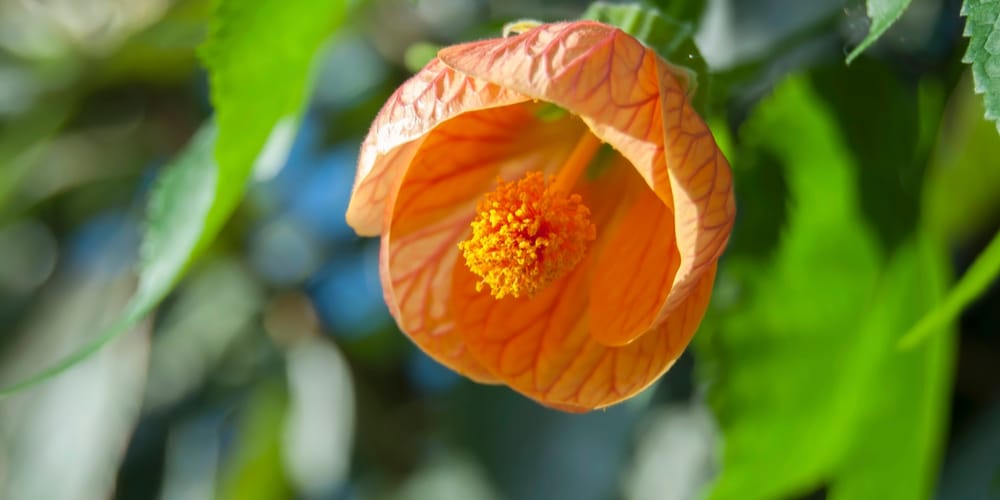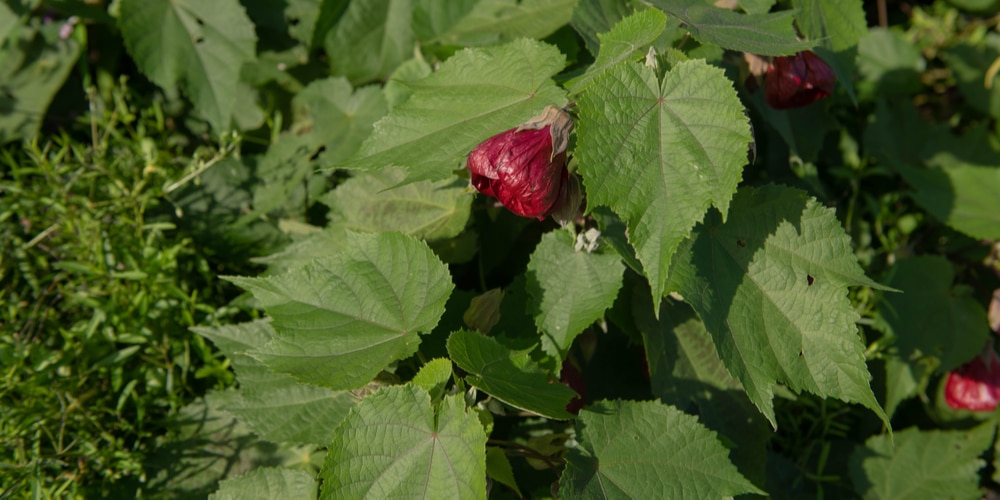Abutilon plants are stunning shrubs that tend not to like cold weather and that, with their eye-catching blooms, can enhance the looks of any yard. There are several species of these lants.
The Nabob variety, also known as the Chinese lantern, is a cultivar with superior tolerance to the heat and not particularly challenging to grow. Keep reading to learn more about this stunning shrub!
| Botanical Name | Abutilon Nabob |
| Common Name | Parlor Maple or Chinese Lantern |
| Plant Type | Perennial |
| Flower Color | The blooms are deep crimson, showy, and bell-shaped. |
| Size When Mature | Between 8 to 10 inches tall and wide. |
| Bloom Time | From Early Spring to Late Fall |
| Sun Requirements | Full Sun |
| USDA Hardiness Zones | Zone 8-10 |
| Soil PH Range | 5.5 to 6.5 |
| Soil Type | Well-draining and moist |
| Water Needs | Medium |
| Native Area | South America |
What you Need to Know About Abutilon Nabob
Abutilon Nabob is an evergreen shrub that produces showy dark red blooms. These plants perform excellently in containers or summer gardeners and adapt to various soil conditions. Happy abutilons are prolific producers: you can expect plenty of flowers from early spring to fall.
How to Care for Abutilon Nabob
Growing a thriving Abutilon Nabob isn’t challenging if you know what to do. Follow the tips we included in this essential guide, and you shouldn’t have any problems with this plant.
Light
Abutilon Nabob thrives in the full sun. Because of its high tolerance to the heat, you won’t have to worry about it getting too much lighting. To get the most out of this shrub, locate it somewhere it can receive at least four hours of direct sun during the day. Partial shade will also work if you take care of its other needs.
Water and Soil Needs
This plant isn’t fussy about soil. However, it will perform best at pHs between 5.5 and 6.5. Also, we recommend using a well-draining substrate for your abutilon nabob.
After all, the plant likes being moist but not wet. For best results, water your plant when the soil feels dry. Keep in mind that you may have to increase watering frequency during the summer. Consider adding a layer of mulch to increase moisture retention.
Temperature Requirements
Abutilon Nabob thrives in warm and sunny environments. It is ideal for growing in USDA hardiness zones between 8 and 10, where you won’t have to worry about protecting your plant during the winter.
If you live in cold weather, you can try growing your abutilon in the summer. However, consider bringing it indoors as soon as temperatures get below 60°F. While it won’t be easy, it might help you enjoy your shrub over the following year.
Fertilizer
Grow your plants in rich soils. You can add compost or manure to increase the nutrient content of the substrate. Alternatively, it might be a good idea to apply a fertilizer rich in phosphorous.
Choose slow-release products over liquid ones to enjoy more blooms. Besides adding extra nutrition, you should consider deadheading the flowers: doing so will promote new growth and minimize the spread of diseases.
Common Diseases
The plant isn’t particularly susceptible to diseases. However, scale insects can infest abutilon nabob, which might threaten its health. Before purchasing chemicals or biological controls, ensure you correctly identify the pests attacking your plant.
Still, we recommend you to take prompt action if you notice something wrong with your abutilon. The earlier you take measures, the fewer problems you’ll have to solve.
Related Article: Flowers That Start With A

